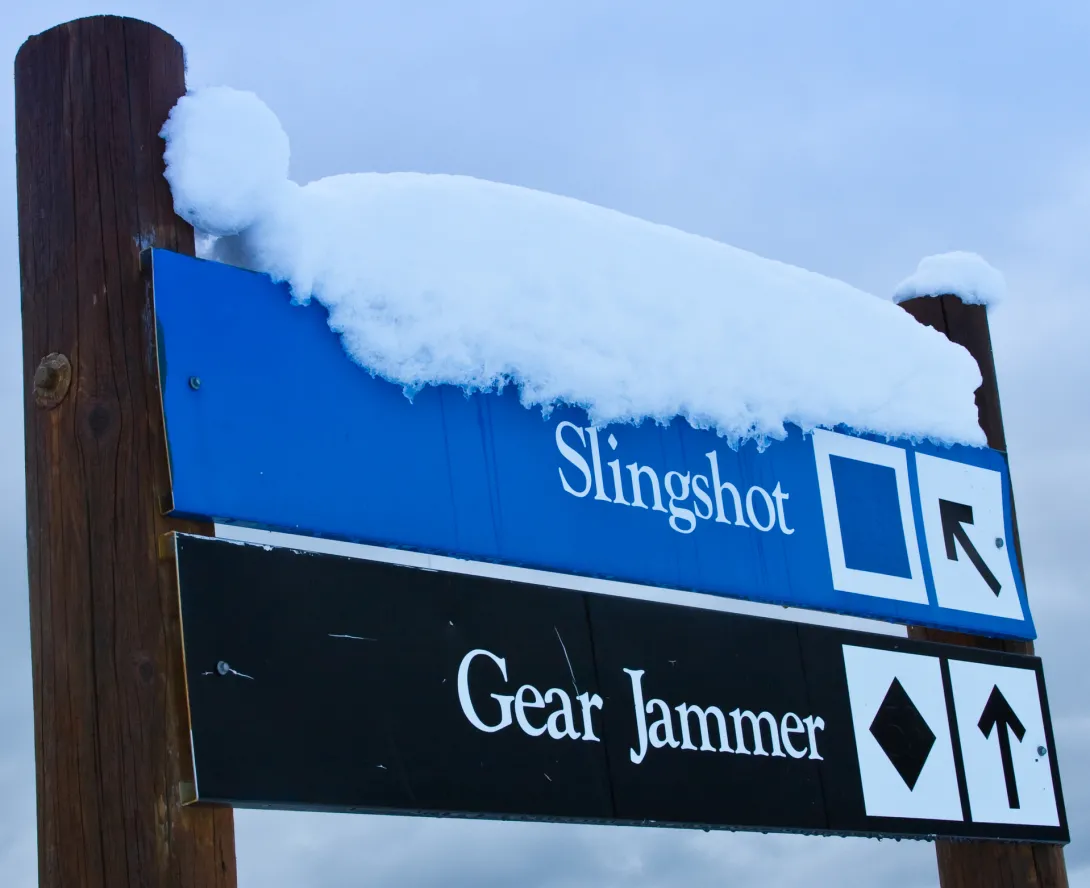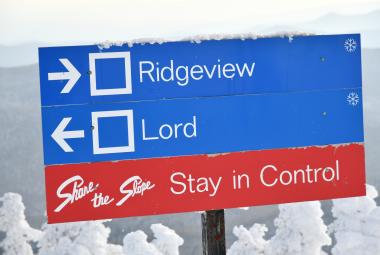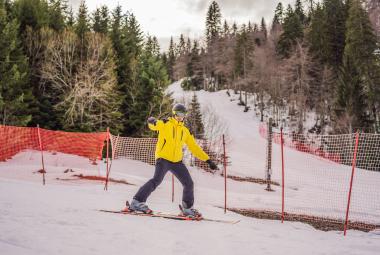Once you get past the beginner slopes, skiing opens up all sorts of trails to try, including the toughest ones.
But how much more difficult is a black diamond compared to a blue square trail?
When you learn to ski, everything seems difficult until you start to get the hang of turning, stopping, and speed. Sooner or later, you'll start to feel comfortable on the skis and you'll want to a bigger challenge than the gentle slope of a green circle trail.
Read more: What do ski slope colors on the slopes mean?

It's no secret that the blue square trails are next, and they introduce a steeper incline, along with more turns.
How hard will the jump be from blue to black diamond?
What you need to master with blue

The green circle trails are about the basics, but the blue trails are about learning to ski in control and comfortably.
Turning is a big part of learning to ski, and you'll need to be very good at not just stopping, but also turning at will. This is especially true of tight turns, like if someone were to fall in front of you or an obstacle comes up fast.
Moreover, you need to be more adept at maintaining control at a higher speed. On the green trails, you can go quite slow and master the basics. But that slow speed is not practical on intermediate blue trails because of the slope gradient of the mountain, along with the fact other skiers around you will be going faster.
Another thing to master with skiing on blue trials are parallel turns, instead of snowplow turns.
Certainly, going down the mountain from the summit to the base should not big deal.
What you need to master with black diamond

Black Diamond are for expert skiers and they have among the toughest trails on the mountain
Moving up to black diamond means not just a steeper hill, but obstacles along the way. Moguls, bumps, and other obstacles will be in your way to the bottom.
You'll need to be confident on steep terrain and in every type of snow condition, from slick hard pack to deep powder.

Some mountains have double black diamond trails, that are for the best skiers on the mountain.
There can be rocks, cliffs, and narrow passages to traverse.
It's really for skiers that are so comfortable skiing that it's just as natural as walking or running.
How do you know you're ready to move up?

Knowing when you're good enough to tackle the next tier of skiing is something you have to consider on your own, but there are a few signs it may be time.
Certainly if you feel good about your turning, stopping, and speed on the hill, that's a good first sign. Remember, no one's perfect and everyone falls, forgets to do something, or otherwise messes up.
Just because you still falter doesn't necessarily mean you're not prepared to move up. But these gaffes should definitely be the exception, not the norm.

There's no doubt black diamond trails look scary, especially when viewing them from the chair lift. That's a very normal conclusion most skiers have before trying their first black diamond trail.
What you want to master on the blue trails is being able to handle both groomed and ungroomed terrain, be okay with bumps, and be able to traverse a steeper slope.
For many skiers, the move up to black diamond is more mental than physical.
How can you prepare for more advanced trails?

Besides practicing more, you could help your cause by employing a few tips.
First, don't overlook a ski lesson. I know it can feel like ski lessons are just for beginners, but getting a private lesson for half a day with an experienced trainer can really give you a good "once over" for ensuring you've got the basics down.
One extra ski lesson could be just what you need from a instructional basis as well as a confidence booster.
Another tip is to look for a ski patrol member on the mountain and ask them for their opinion on which advanced trail is the easiest to try first. Not all black diamonds are created the same, and some may be rated black diamond for one small aspect of the run.
Something I have to remind myself all the time is it's okay to stop, take a breather, and survey the upcoming trail. No one said you have to be able to ski a black diamond from start to finish without stopping. So find a good stopping point, relax, and look ahead to prepare mentally for what's coming next.







